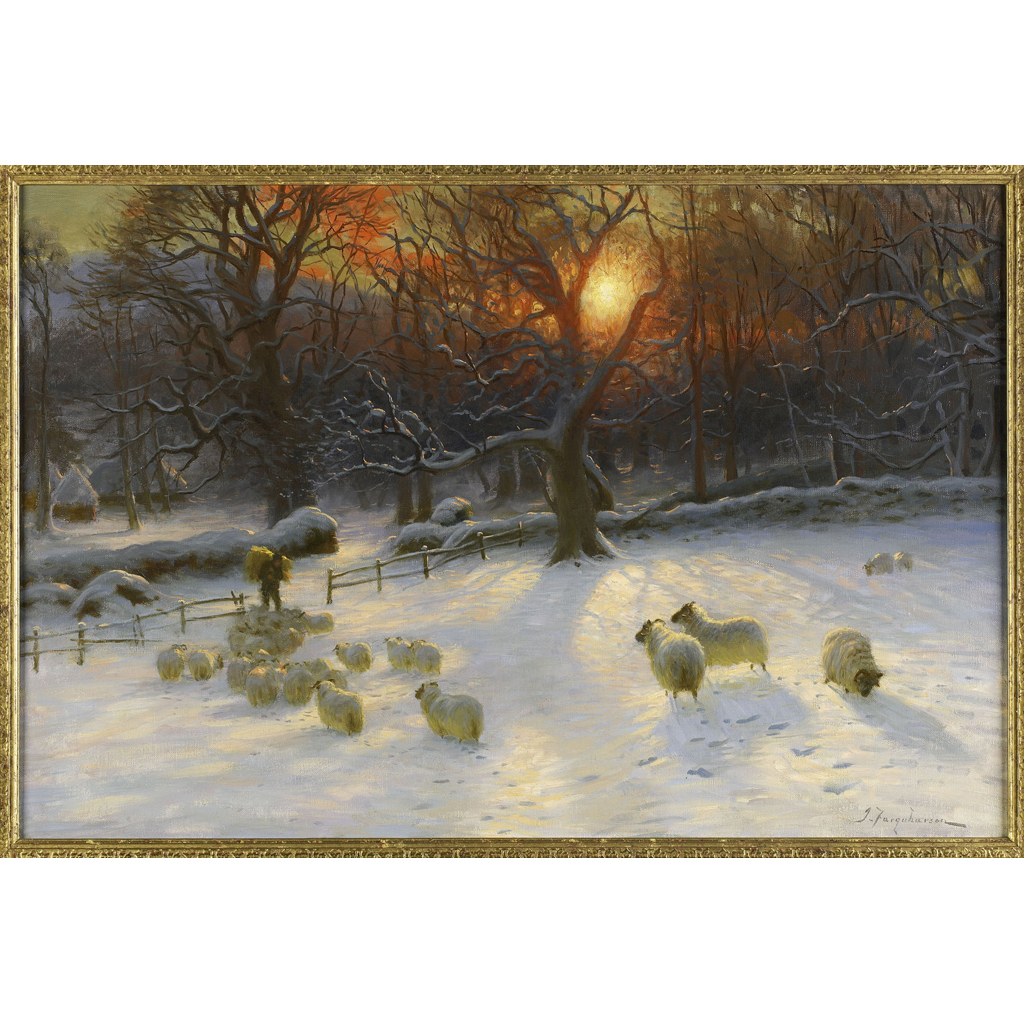JOSEPH FARQUHARSON R.A. (SCOTTISH 1846-1935)
BENEATH THE SNOW ENCUMBERED BRANCHES
£120,000
Scottish Paintings & Sculpture
Auction: 9 June 2016 at 19:00 BST
Description
Signed, oil on canvas
Dimensions
51cm x 76cm (20in x 30in)
Footnote
Provenance: Richard Green Fine Paintings, London, J.988
Note: A painting of this title was exhibited at the Royal Academy in 1901
By the beginning of the twentieth century Joseph Farquharson had established himself as the foremost landscape painter in Scotland, making the subject of snow-covered Deeside his true domain. Throughout his life he balanced his artistic career with the inherited responsibility of laird of the family estate, Finzean in Aberdeenshire, where the Farquharson family has lived since 1579. He studied at the Edinburgh Trustees' Academy, where he was greatly influenced by Peter Graham, and from 1880 onwards spent time in the studio of Carolus-Duran in Paris where he met and became friends with American painter John Singer Sargeant. Paris at the end of the nineteenth century was a hotbed of artistic development and Farquharson was able to assimilate many of the concerns of the Impressionists and the Naturalists exhibiting there at the time. Most importantly, he understood the importance of working en plein air in front of the motif and depicting nature at different times of day and in different atmospheric conditions.
An early example of the scale and power of his canvasses is A Joyless Winter Day (1883), now in the Tate Gallery, London. It depicts an icy snowstorm, which remarkably the artist painted in situ, from a specially constructed mobile painting hut, which even contained a stove. Farquharson frequently included a human figure in his compositions, introducing a sense of scale and presence in the frequently unwelcoming landscape. A factotum at the estate frequently used to help the artist by posing as a shepherd and one of the surviving anecdotes tells us how his model was getting rather blue during one sitting session in the winter, and the artist invited him to go into the mobile studio and warm up. The factotum however asked the artist whether he had finished or not and when they established he had not, he said that he would wait a little longer until Farquharson had completed his study.
Such a figure is seen in the present canvas, tending his sheep. Farquharson sent one painting to the Royal Academy every year between 1894 and 1925, with the exception of 1914. He managed to create innovative and imaginative compositions every time, by finding an unexplored corner of his estate, going out to paint at different times of the day, and in different weather conditions, and even adopting a slightly elevated point of view as he has done here. The light filtering through the tree branches is at once dramatic and balanced against the coolness of the snow in the foreground. The violence and pathos of the sunset adds poetry to an otherwise mundane scene of a shepherd tending his sheep. Every rock, tree and shrub is lovingly described and mapped out, as only someone who really knows and understand the landscape and the local geography can paint it.
Farquharson's landscapes not only serve to depict the Deeside countryside beautifully, they also serve as points of reflection and contemplation. The dramatic yet subtle juxtaposition of a winter landscape with a beautiful light bathing the scene offers the viewer space for reflection on the life of those living on the land, or more abstractly, on the lyrical beauty of nature.

